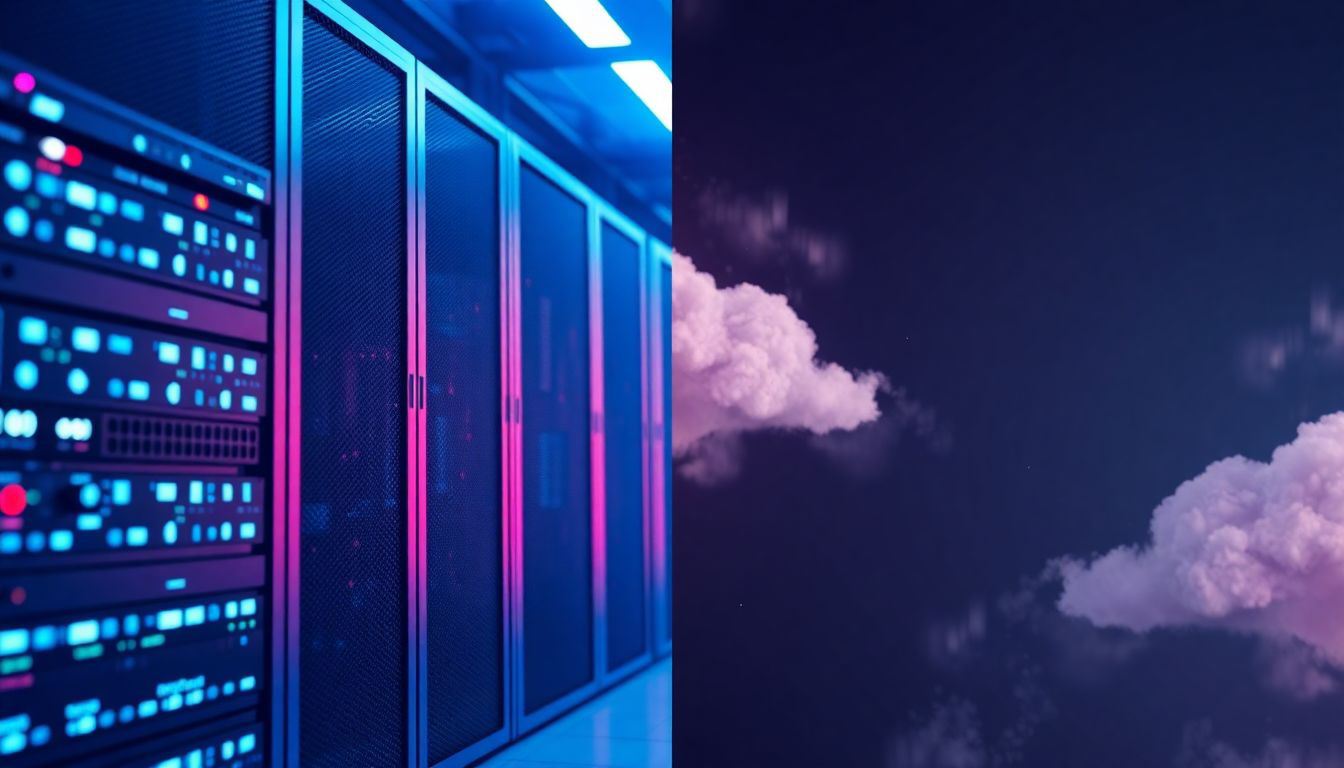Did you know that the number of IoT devices could hit 75 billion by 2025? That's a lot of data! Cloud computing and edge computing are how we handle it all. Cloud computing uses remote servers to store and process information. Edge computing brings that power closer to where the data comes from. Knowing their differences is key. The best choice depends on what your project needs.
What is Cloud Computing?
Cloud computing is like renting computer power instead of owning it. It lets you use software, store files, and run applications on the internet. All you need is a connection. Instead of keeping everything on your own computer, you tap into a shared pool of resources.
Centralized Infrastructure
Cloud computing relies on big data centers. These centers are in faraway places. They house many powerful computers. These computers can do lots of work. Because they serve so many users, they cost less. This cuts the price for everyone.
Key Characteristics
Cloud computing has some cool features. You can get services whenever you want. You can access them from anywhere with the internet. The resources are shared among many users. You can quickly get more or less power as you need it. You only pay for what you use.
Cloud Computing Use Cases
Cloud computing is useful in many situations. You can store files like photos and videos. You can use software without installing it. You can back up your data in case something goes wrong.
What is Edge Computing?
Edge computing moves the action closer to where the data is. Instead of sending everything to the cloud, some of the processing happens right there. Think of it as having mini data centers near the source. This can speed things up.
Distributed Architecture
Edge computing isn't one big center. It's a bunch of smaller setups. These setups are closer to where things are happening. It spreads the work around. This means less waiting.
Benefits of Proximity
Edge computing offers some great perks. It cuts down on delays. It uses less bandwidth. It boosts privacy since less data moves around. This is super important for some projects.
Edge Computing Use Cases
Edge computing shines in certain areas. Self-driving cars need to react instantly. Smart factories need to make quick decisions. Doctors can even use it for remote checkups.
Edge vs. Cloud: Key Differences
Edge and cloud computing have some main differences. It's not always easy to tell them apart. Latency, cost, and security all matter. Let's break it down.
Latency and Speed
Cloud computing can have delays. Data has to travel far to a central server. Edge computing is much faster. Processing happens right on the spot. This is vital for real-time needs.
Bandwidth and Cost
Sending tons of data to the cloud eats up bandwidth. This can get expensive. Edge computing cuts down on this. It processes data locally. This saves money on data transfer.
Security and Privacy
Cloud security is a big deal. You're trusting someone else with your data. Edge computing adds a layer of protection. Data is processed locally, so it's less likely to be intercepted. This also helps with data rules.
Hybrid Approach: Combining Edge and Cloud
You don't always have to choose one or the other. A hybrid approach mixes edge and cloud. This lets you get the best of both worlds. It's like having a super team.
Data Processing Workflow
Data gets processed first at the edge. Important stuff is sent to the cloud later. The cloud handles long-term storage and big analysis. This splits up the workload.
Optimized Resource Allocation
A hybrid setup uses resources wisely. The edge handles quick tasks. The cloud tackles bigger projects. This makes everything run smoother.
Hybrid Use Cases
Hybrid setups are great for many things. They can help predict when machines need fixing. They can make power grids smarter. They offer flexibility and power.
Choosing the Right Paradigm
How do you pick between edge and cloud? Think about what your project needs. Consider things like speed, cost, and security. There's no one-size-fits-all answer.
Application Requirements
Does your project need to react instantly? Is bandwidth limited? Do you need extra security? How much data will you have? These questions will guide you.
Cost Analysis
Think about all the costs. Edge computing needs hardware and local software. Cloud computing charges for usage. See which one fits your budget.
Future Trends
Edge computing is getting smarter. We're seeing things like serverless edge and AI at the edge. Cloud computing is also improving. Both are changing quickly.
Conclusion
Edge and cloud computing each have their strengths. Cloud computing is great for storage and big tasks. Edge computing shines with speed and security. Pick the one that matches your project's needs. Both are becoming more common and changing industries.
-thepostpress.in


Post a Comment